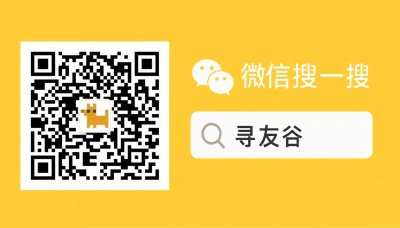Why Malay (Melayu) WeChat groups and QR codes matter to you
If you’re a United States person — student, researcher, or professional — living in China or getting ready to come over, you already know WeChat is the Swiss Army knife of daily life here. For Malay speakers (Melayu) and Malaysians in particular, WeChat groups built around language, food, housing, and visa tips are lifesavers. The quickest way into those groups? A QR code. One scan, and you’re inside the chat where people swap apartment leads, recommend nasi lemak spots, swap exam notes, or warn about migration paperwork.
But QR codes are double-edged. They’re fast, viral, and useful — and they’re also the vector for spam, scams, and privacy leaks if you don’t handle them like a grown-up. This guide walks you through practical steps: how to find legit Melayu groups, what a group QR actually does, how to make your own safe group QR for campus or community, and how QR usage ties into travel and payment systems you’ll use on the road. Along the way I’ll bring in a few recent trends around digital QR travel tools and cross-border payments to show the bigger picture and help you use group WeChat like a pro.
How group WeChat Melayu QR codes work — and why they’re popular
Group QR codes in WeChat are basically a one-time or reusable portal that lets anyone scan to request joining a group. For Malay communities in China, that’s perfect: language barrier minimized, local advice amplified, and social life accelerated. Typical use cases:
- New arrivals joining campus or city-specific Melayu groups (housing, roommate searches, language practice).
- Short-term visitors using group QR codes for event coordination (meetups, halal food hunts, prayer timings).
- Small businesses or student clubs sharing a QR to recruit members quickly.
Technically it’s simple: the group admin generates a QR code from within the group settings and shares the image. Anyone scanning the QR with WeChat gets a join prompt. Admins can set the code to expire after a time or number of uses, or require admin approval to filter joiners.
Why they’re taking off now:
- Convenience: One QR image does what dozens of manual invites used to do.
- Cross-border travel fit: many travel systems and e-services are QR-driven (e.g., digital ETAs and arrival forms that generate QR codes for immigration), so users are comfortable scanning-and-showing on arrival. See the South Africa e-ETA rollout as a sign of the QR-first travel world trend [Business Today, 2025-11-21].
Practical reality: group QR codes are social glue. But if you treat them like open doors without a peephole, someone’s going to walk in and drop a phishing link or a scam job ad.
Safety, moderation, and making a QR that’s actually useful
Run a safe group and people will stay. Mess it up and the group dies fast. Here’s the playbook for admins and smart joiners.
For group admins — how to create a robust, re-usable Melayu group QR:
- Create the group with clear purpose: “Melayu Students — Shanghai Uni 2025” beats “Melayu”.
- Generate QR in group settings. Set it to expire after a week or after X uses if you expect random public sharing.
- Pin a welcome message that:
- Lists rules (no job scams, no spam links, respect privacy).
- Gives admin contact names and expected response times.
- Explains how to verify identity (e.g., “Send uni email + student ID or a short intro in Malay/English”).
- Add at least two admins and set one as backup for moderation when you’re busy.
- Use WeChat Channels or a mini-program for event sign-ups (less chat spam, more structure).
For joiners — quick checklist before scanning a public QR:
- Where did this QR come from? A consulate page, student union, or a private friend are safer than random Facebook or Telegram posts.
- Check for a pinned verification step after you join. If there isn’t one, introduce yourself and ask how members verify new people.
- Don’t click on links shared by brand-new members. Wait until they’re vetted.
Moderator tactics that actually work:
- Require a one-time intro post by new members (name, uni/company, reason for joining).
- Auto-delete forwarded invites from unknown sources — those often bring spam bots.
- Weekly cleanup: remove inactive accounts that joined via old, public QR codes.
Practical uses: travel, payments, and documentation
We live in a QR-first world. From immigration e-forms to mall coupons and payment systems, QR codes show up everywhere. A few practical threads to watch:
- Travel documents that generate QR codes are increasingly common. Air and immigration apps can produce QR passes or ETAs you present on arrival — think of them as a digital boarding pass for paperwork. This trend is visible in the recent rollout of South Africa’s fully digital ETA system, which issues QR codes for easier entry processing [Business Today, 2025-11-21].
- Cross-border payment and QR commerce platforms are expanding, and WeChat Pay is part of that ecosystem. Korean retail experiments with QR malls that connect overseas payment tools point to a future where foreign shoppers scan QR codes to pay with WeChat/Alipay internationally — handy for travelers and students handling purchases back home or abroad.
- If you’re planning travel after studies or juggling multiple visas, pay attention to long-term residency changes in major destinations (for example, recent discussions and policy shifts in the UK highlight how visa and residency landscapes can change, which affects students and low-paid workers planning longer stays) [The Daily Jagran, 2025-11-21]. That’s not directly WeChat, but it affects the kinds of groups you’ll need (job-hunt groups, residency advice groups, alumni networks).
- For planning short leisure trips (like a Europe route), packing lists and itinerary-sharing via group QR invites make quick coordination easy; travel planning blogs show how group coordination cuts friction in multi-stop itineraries [PickYourTrail, 2025-11-21].
Use case examples:
- A Malay student uses a campus Melayu group QR to find a halal grocery roommate share, then gets a private WeChat transfer for the deposit via WeChat Pay.
- A small halal food stall in a university district prints a group QR and pins it in the window: scan to join for weekly discount codes.
- A diaspora org issues a time-limited QR to gather attendees for a cultural event, then closes it to prevent spam.
🙋 Frequently Asked Questions (FAQ)
Q1: How do I safely join a Melayu WeChat group using a QR code?
A1: Steps to join safely:
- Verify the QR source: prefer official pages (student union, embassy, verified organizer) or a friend.
- Scan the QR in WeChat and post the required intro immediately (name, affiliation).
- If the group asks for verification (student ID, photo), follow the set steps — do not accept off-app DMs asking for personal docs.
- Pause before clicking links from brand-new members; when in doubt, ask an admin.
Official channels: ask your university international office or student union for verified group links and admin contacts.
Q2: I’m an admin — what exact settings should I use when creating a group QR?
A2: Recommended admin roadmap:
- Create the group and add 2–3 trusted admins.
- Open group settings → “Group QR Code” → set expiration (e.g., 7 days) or limited uses.
- Pin a welcome message with verification steps and rules.
- Enable “Only admins can invite new members” if spam is a problem, then share time-limited QR codes at events.
- Schedule a weekly admin check: remove suspicious accounts and update the QR if spam rises.
Tip: Keep a backup contact (email or another messaging app) for members who can’t join via QR.
Q3: Can WeChat group QR codes be used for payments or official travel documents?
A3: Short answer: not directly the same thing, but they live in the same QR ecosystem. Guidance:
- Payments: WeChat Pay has its own QR payment codes for merchants and personal transfers — group QR is for joining chats, not for payments. However, groups often share merchant QR codes for payments in the chat. Always check the merchant’s page or receipts before paying.
- Travel documents: Many immigration and travel apps generate QR codes (e.g., e-ETAs) that you present at airports. Treat those as official documents and keep screenshots and PDF backups. For example, South Africa’s e-ETA system issues a QR to simplify border checks [Business Today, 2025-11-21].
Steps to manage travel QR codes:- Save a screenshot and a PDF copy; store in cloud and local phone album.
- Keep a printed copy in case of network issues.
- Always check expiry and reapply in time.
Q4: Someone joined a Melayu group and posted a suspicious job link. What should admins do?
A4: Immediate action list:
- Remove the post and block the link.
- Mute or remove the offending account after checking admin logs.
- Post a short safety notice to members explaining why the post was removed and remind members not to click unknown links.
- If the scam involves money and a clear fraud pattern, collect screenshots and report to local police or the platform’s reporting tool.
🧩 Conclusion
Group WeChat Melayu QR codes give Malaysian and Malay-speaking communities in China fast access to language-specific support, housing leads, food tips, and local help. They’re a low-friction way to build community — as long as you build a little friction into the vetting process. Think of QR codes as the front door: you still need a lock, a peephole, and a friendly bouncer.
Quick checklist before you scan or promote a group QR:
- Verify the QR source (official vs random post).
- Look for a pinned verification step in the group.
- Admins: set time-limited or use-limited QR codes and keep 2+ moderators.
- Save travel/payment QR codes securely and don’t confuse group join QRs with payment or travel QR codes.
📣 How to Join the Group
Want to connect with other Malay speakers and get invited into vetted groups? XunYouGu’s community is set up to help. Steps to join:
- Open WeChat and search for the official XunYouGu account: “xunyougu”.
- Follow the account and message the assistant with: “Melayu group invite — [city/university]” plus a short intro.
- The assistant will verify and send you a time-limited group QR or add you directly if the group prefers invite-only.
We value privacy and vetting: we don’t post public, permanent QRs for big groups. If you’re a student or new arrival, that extra step saves you from spam and scams.
📚 Further Reading
🔸 South Africa rolls out fully digital ETA system for visa application: Here’s what changes for Indians
🗞️ Source: Business Today – 📅 2025-11-21
🔗 Read Full Article
🔸 How To Plan A Europe Trip From India
🗞️ Source: PickYourTrail – 📅 2025-11-21
🔗 Read Full Article
🔸 UK Unveils Harshest Residency Rules In Decades, Low-Paid Workers To Face 15–20 Year Wait: What It Means For Indians
🗞️ Source: The Daily Jagran (english_jagran) – 📅 2025-11-21
🔗 Read Full Article
📌 Disclaimer
This article is based on public information, compiled and refined with the help of an AI assistant. It does not constitute legal, investment, immigration, or study-abroad advice. Please refer to official channels for final confirmation. If any inappropriate content was generated, it’s entirely the AI’s fault 😅 — please contact me for corrections.

